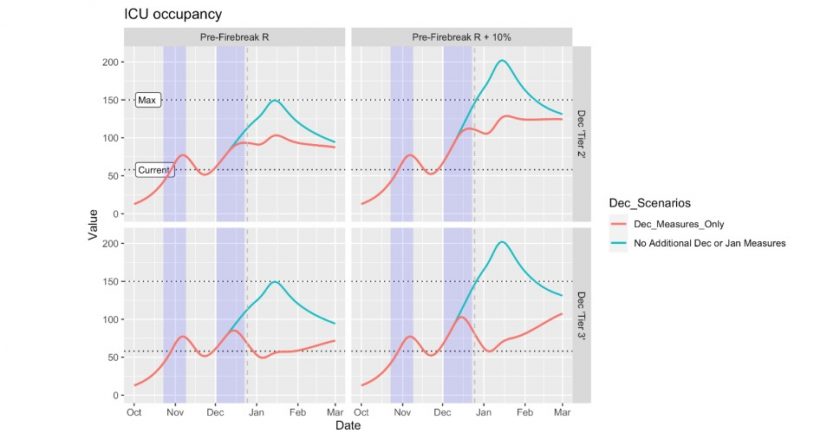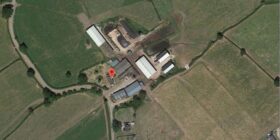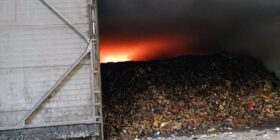Technical Advisory Group suggest ten day ‘pre-isolation’ period before Christmas as modelling suggests future measures could be required
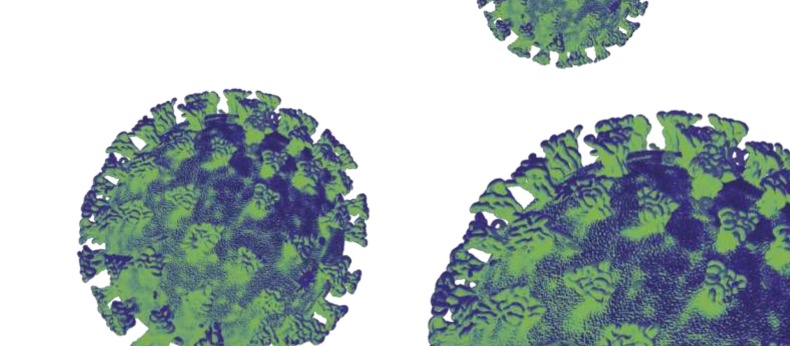
Wrexham would be classed as being in a ‘very high category’ with over 200 coronavirus cases per 100k a new document has shown.
Welsh Government has published more of the scientific and technical research, and evidence they have received to form a response to the pandemic in Wales, this time on the “technical and scientific rationale for the introduction of non-pharmaceutical interventions (NPIs) in Wales in the pre-Christmas period”
The latest advice document from the Technical Advisory Cell (TAC) has been released, although public now the document itself is as usual several days old. The Technical Advisory Cell (TAC) is a conduit and interpretation group, interpreting UK Scientific Advisory Group for Emergencies (SAGE) outputs into a Welsh context, relay relevant information and questions from Welsh Government to SAGE as well as feed the information to groups such as Local Resilience Fora. The documents are fully marked that they are advice only, and have in capital letters on every page “THIS IS NOT WELSH GOVERNMENT POLICY”.
The new document is dated December 2nd, and notes the then most recent daily surveillance report from that date, showing a national picture of 226 cases per 100,000 with a 13.3% positivity. Today the latest rolling seven day figure a week on states that is now 308 per 100k with a testing positive proportion of 15.9%.
A categorisation is detailed in the document, with the “very high category” defined as 200+ cases per 100K, high as 50+ cases per 100K and a ‘lower’ category of under that.
The document outlines overall advice for those looking to take advantage of the festive ‘window’, noting “The best way to protect older family members is not to expose them to potential infection, no matter how well-intended the reason for contact”.
The assessment is blunt, “Winter celebrations, like Christmas, will likely lead to increased intergenerational mixing and opportunities for the virus to spread to new networks of contacts, from pre-Christmas social mixing to extended household mixing at Christmas. This is highly likely to provide increased opportunities for transmission of the disease. Increases in infections in older adults is likely to lead to higher deaths and hospitalisations after Christmas.”
The advisory cell notes some possible advice that the public could heed around the 12th of December, “As rates of infection in the community rise before the Christmas period, it is likely that more people will need to self isolate or quarantine over Christmas. Pre-isolating (e.g. not mixing outside of the household) for one incubation period (10 days) would likely be an effective way of lowering your risk of infecting others.”
Pre-isolation advice is expanded upon, “Pre-isolation may be a helpful consideration for families with children before visiting older relatives. Similarly, in occupations where there is a higher odds ratio of infection (e.g. warehouse and factory workers, health and social care workers)”
A postponement of festivities due to the pandemic is also suggested, “If people can avoid seeing others over the Christmas period, perhaps postponing celebrations until later next year or meeting remotely, then this is strongly advised.”
Advice that relates to the recent hospitality sector measures is also explained, “Policy modelling suggests that introducing the equivalent of Tier 3 restrictions (e.g. closure of hospitality and entertainment, reduction in mixing) prior to the relaxation restrictions before Christmas will reduce the number of hospital and ICU beds required for COVID-19 patients, and subsequent deaths.”
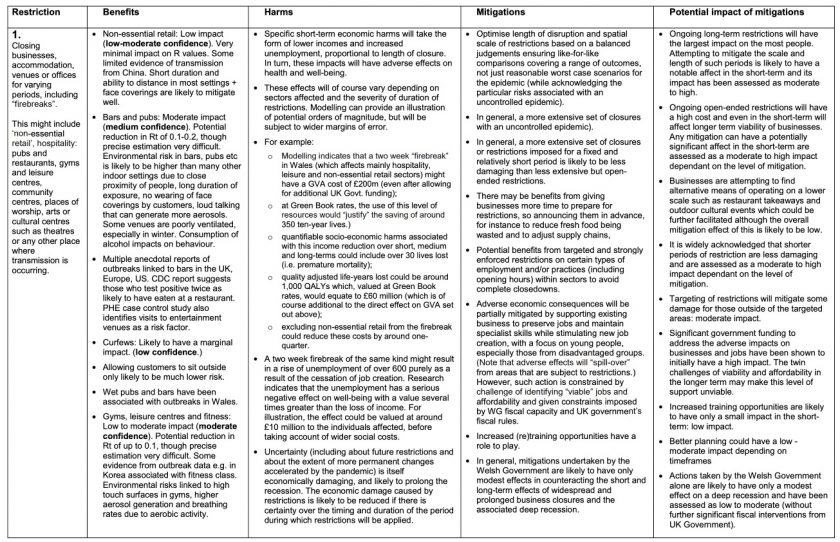
The document also refers to previous TAC releases, including one this one that contains a summary of evidence on costs and benefits and potential mitigations for measures to address – with this table on hospitality closures.
The TAC points to the SAGE findings, and research is cited from USA based data, and Public Health England which says “there was strong statistical evidence that engaging in entertainment activities was associated increased odds of disease”.
Welsh specific information is given via the Test Trace Protect system, ” In the same TTP system, individual cases report exposure to pubs and restaurants relatively infrequently (<10% of reported location exposures). Wet pubs and clubs (i.e. those venues predominantly serving alcohol) were the most common commercial setting associated with infection and accounted for 41 (23%) clusters. Enforcement data can provide an indication of the likelihood of infection risk associated with specific commercial settings.”
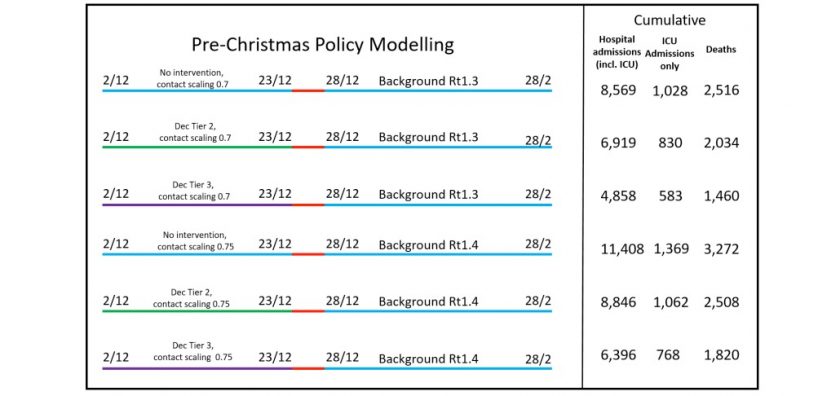
6 different pre-Christmas policy scenarios were modelled, the red section of the line indicates additional mixing during the Christmas period, estimated to result in a further 10% additional transmission. The ‘Tier 3’ measures for some sectors were brought in.
Data on compliance is also give, “Since the introduction of the Restrictions Regulations on 9th August (up to 20th November) a total of 295 Premises Improvement Notices and 80 Premises Closure Notices have been served, hospitality is consistently the most common setting for service of these notices – 179 (61%) improvement notices and 62 (78%) closure notices.”
The efforts from the hospitality industry are noted however issues outside of their control is referenced, “Despite much effort from the industry to provide COVID secure environments, it is not possible to uncouple the linking activities that also confer higher risks of transmission (e.g. transport to venue, mixing between venues).”
The TAC document covers recent increases connected to education settings, and states “it is to be expected that numbers of school students and school staff in self-isolation as a ‘bubble’ contact will continue to grow as cases in the community rise”, adding ” available evidence indicates that schools being open is associated with higher rates of infection in the population, although there is no clear evidence of a causative relationship”.
The more positive recent news of vaccines itself could exacerbate the risk of transmission in the community, with the TAC explaining of “possible complacency with the welcome news on the forthcoming availability of
vaccines, a recent qualitative study noting the possibility of people relaxing” while noting a counter-argument is feasible, where people “continue to be cautious as they can now see an end in sight”.
New modelling is ongoing with Swansea University looking at the impact of “non-pharmaceutical interventions” in the pre and post-Christmas period.
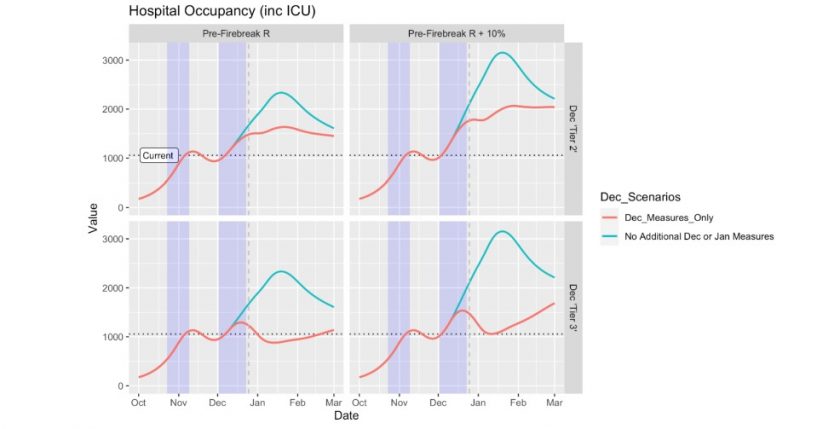
Hospital bed occupancy Modelling between October and March 2021 in different pre-Christmas scenarios
Three modelling outputs are shown, detailing predicted deaths per day, ICU capacity and hospital bed occupancy. With the ‘Tier 3’ measures in December the deaths per day figure exceeds the first peak of the pandemic assuming there are no additional measures in December and January taking into account the Christmas ‘window’. The ICU modelling shows without any additional measures occupancy is predicted to far exceed the ‘max’ without any mitigation.
The new data gives more insight to the comments made by the Health Minister yesterday when asked about possible future measures, that all options were ‘still on the table’, adding “If we need to act at a different point in time, then we will. This is really a message for each and every one of us about what we are prepared to do, about the choices we make, about how many people we see, how long we see them for and what we can do to take care of ourselves and each other. Because the rules of government could only take us so far. It’s then about the choices that we all make.”
Spotted something? Got a story? Email [email protected]
